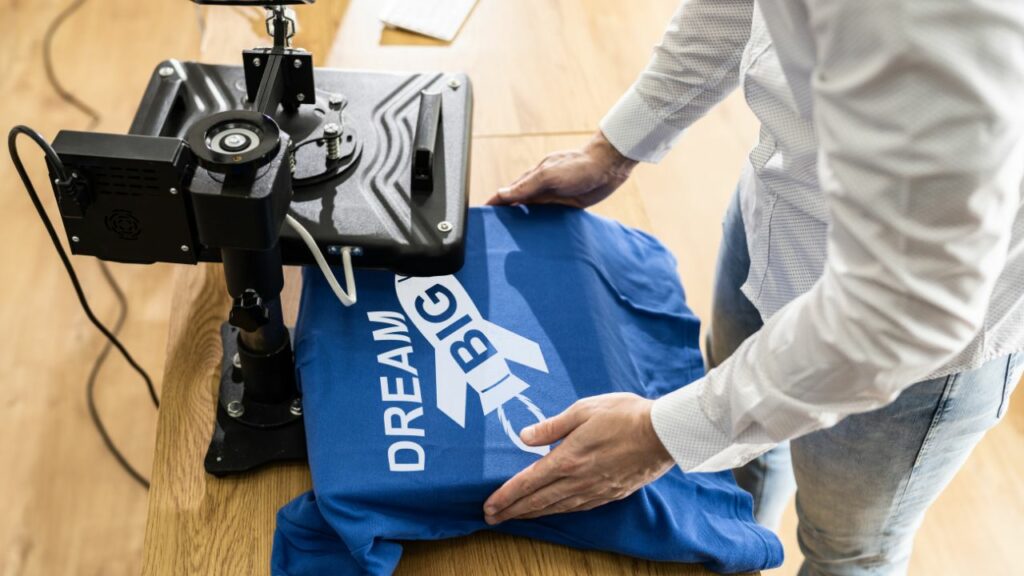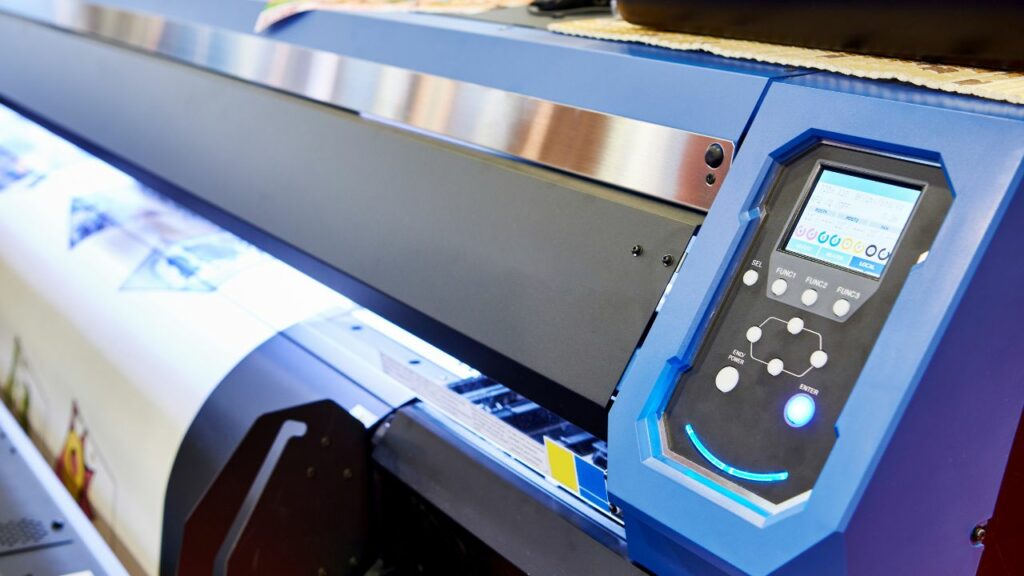Hey there, future apparel mogul! So, you’re ready to dip your toes into the wild and wonderful world of apparel decorating. Awesome! But hold on a sec, it’s not all rainbows and butterflies—trust me. You’ve probably already stumbled upon some confusing terms like Sublimation, DigitalHeat FX, and Direct-to-Garment (DTG) Printing. Feeling overwhelmed yet? It’s like trying to pick a Netflix show with endless options, right?
Look, each of these techniques is like a unique superhero with its own superpowers and weaknesses. What works for Superman doesn’t necessarily work for Spider-Man, you know what I mean? In this rock-solid guide, we’re gonna break down all the bells and whistles of these three major techniques. We’re talking the good, the bad, and even the kinda ugly. When we’re done, you’ll be armed with enough know-how to pick the one that’ll make your business soar, or at least keep you from face-planting.
Alright, enough with the chit-chat! Buckle up, because we’re diving headfirst into this jam-packed guide. Let’s unravel this mystery, shall we?
Feel free to chime in if you want any more adjustments!
How They Work

Sublimation
Imagine this: you’ve got a design that you absolutely love, and you want it on a t-shirt, a mug, and heck, why not, a phone case too. This is where Sublimation can really flex its muscles.
Here’s how it rolls. You start with a special kind of ink that’s different from your regular printer ink. When you apply heat to this ink, it does a Houdini and goes from a solid directly to a gas. Poof! No messy liquid stage. The gas then infiltrates the very fibers of the material, giving you a print that’s not just on the surface but part of the material itself. The upshot? Your print is going nowhere. It won’t crack, peel, or fade, and the colors stay poppin’ for a long, long time. It’s like getting a tattoo, but for your clothes!
However, there’s a catch—you’ve got to use polymer-based materials. That’s your man-made stuff like polyester. Sublimation doesn’t play well with natural fibers like cotton because they lack the “pores” needed to absorb the gas. Also, this method shines best on light-colored surfaces. Try it on dark colors, and your design might just fade into oblivion.
So, in a nutshell, if you’re after vibrant, long-lasting prints and you’re cool with sticking to specific materials, Sublimation is your go-to guy.
DigitalHeat FX
Alright, let’s hop on over to DigitalHeat FX. If Sublimation is the geeky scientist, DigitalHeat FX is the all-around athlete. It’s good at many things but doesn’t specialize in one. Here’s how it works.
You start with your design on a computer (like you do with pretty much everything these days, right?). The design is then printed onto a special transfer paper using a printer loaded with unique toners. Stick with me now; this is where it gets cool. You take that printed transfer paper and put it on your garment. Then, you press it down with a heat press—kind of like a giant, super-hot iron. Lift the press, peel off the paper, and bam! Your design is now part of the fabric.
The beauty of DigitalHeat FX is its flexibility. You can print on light and dark fabrics, heck, even wood and metal if you want to get adventurous. However, the print tends to sit on top of the fabric, which means it can fade or peel over time, especially with frequent washing. But if you’re looking for a method that’s quick, relatively simple, and can tackle a range of materials, DigitalHeat FX is your jam.
Direct-to-Garment (DTG) Printing
Last, but absolutely not least, let’s chew the fat on Direct-to-Garment (DTG) Printing. If you’ve ever used an inkjet printer to print a school assignment or a cute pic of your cat, you’re halfway there. With DTG, it’s the same concept, just super-sized.
First off, you’ve got your design, right? Cool. Now, instead of paper, you’re going to load a t-shirt into the printer. No, seriously, you load a t-shirt into the printer. The printer then goes to town, spraying water-based inks directly onto the fabric. The result is a highly detailed, super vibrant print that feels soft to the touch.
The best part? You can go all out with colors and complexity. Want to print a picture of a sunset over a city skyline with every hue in the rainbow? No problemo. DTG can handle it. However, if you’re thinking of going dark—like dark fabrics, I mean—you’ll need to pretreat the garment to make sure the ink sticks.
Also, those water-based inks? Yeah, they’re eco-friendly, which is a big thumbs-up if you’re into sustainability. The downside is the cost. DTG printers and inks can be pricey, and the prints themselves are generally best suited for cotton-based fabrics.
So if you’re into small runs, custom orders, or just want the freedom to go bonkers with your designs, DTG might be your soulmate in the printing world.
And there you have it, folks! A deeper dive into the “How’s it work?” of Sublimation, DigitalHeat FX, and Direct-to-Garment printing. Each has its quirks, but hey, that’s what makes them special, right? Now, on to figuring out which one is going to be your new BFF in the apparel decorating biz.
Return on Investment
Sublimation
So, sublimation, right? Yeah, the sticker shock is real. Those printers and inks ain’t cheap. But once you cough up the cash and get the ball rolling, you’re looking at smooth sailing. Your ongoing expenses? Pretty chill. Plus, the finished product is top-notch, which means you can charge top dollar.
DigitalHeat FX
Swinging over to DigitalHeat FX – it’s chill on the wallet, both starting up and keeping the wheels turning. Sure, you’ll be buying transfer paper and toner, and yeah, it adds up. But the cool part? The flexibility! It’s like yoga for printing; you stretch into different products, pulling in more customers with your range. Sweet, right?
Direct-to-Garment (DTG)
Then there’s DTG, the high-roller of the group. Big spending at the jump and keeps sipping dollars with those specialized inks and fancy pre-treatment solutions for the moody dark fabrics. But hey, every cloud… This bad boy makes small-batch, custom prints a breeze. Got a tiny, unique order? DTG’s your guy.
So, what’s the vibe you’re chasing? If it’s all ‘bout that primo quality, and you’re cool with paying for the best, Sublimation is calling your name. If you want to bend and snap with different products, DigitalHeat FX is your jam. And for those exclusive, petite orders? Say hey to DTG.
Choosing the Right Technique
Sublimation
Got the basics down? Cool. Now, which technique’s the one for you? If your jam’s polyester fabrics and hard goods like mugs and phone cases, you gotta roll with Sublimation. But heads up – it’s a bust for cotton fibers.
DigitalHeat FX
DigitalHeat FX is the deal if you need a do-it-all wizard. Talking T-shirts, hats, and even, yes, wood! If you’re planning to sling a variety of products, this technique is your ride or die. Perfect for businesses looking to flex with an array of goodies.
Direct-to-Garment (DTG)
Into details and taking small, custom orders? DTG is your guy. This technique is the dream for businesses living for customization and short runs. The snag? Cotton garments are your main canvas here.
So, what’s it gonna be? Your call will boil down to what’s key for you: being versatile, customization, or that print quality. Take a hard look at who you’re selling to and what your biz needs. And there you have it – you’re on the right path!
What Can It Print On?

Sublimation
Wonderin’ what cool stuff you can print with Sublimation? Well, it works wonders on polyester and anything with a polymer coat. Sports jerseys? Check. Promo mugs? Double-check. But don’t even think about natural fibers—they ain’t welcome here.
DigitalHeat FX
Say hello to DigitalHeat FX, the jack-of-all-trades in the print game. No drama with materials here—it’s all good. Cotton, polyester, wood—it’s chill with everything. Think of it as your go-to tool for all things custom print.
Direct-to-Garment (DTG)
DTG is somewhat limited in its material scope. It’s a champ on cotton, but if you want to venture into polyester or other synthetic materials, you’ll need some pre-treatment solutions, which could be a hassle.
The sky’s the limit—or almost—with these techniques. From basic cotton tees to high-end athletic wear and even non-fabric items like mugs and phone cases, you’ve got options aplenty.
Choosing the right method will depend on the range of products you want to offer. So weigh your options carefully, considering both the material you’ll be printing on and the kind of investment you’re willing to make.
Conclusion
Whoa, dude! That was a whirlwind of info, right? No worries, though! With all that knowledge in your back pocket, you’re totally prepped to make some wicked decisions for your apparel decorating gig. Whether you’re vibing with the long-lasting, quality prints from Sublimation, diggin’ the all-rounder DigitalHeat FX, or getting down with the deep, custom details of DTG, each one’s got its own special sauce to offer in the market.
Your win? It’s all about getting the 411 on what your biz really needs and what the folks out there are craving. Nail that, and, bam – you’re unstoppable.
So, what’s the hold-up? Choose your weapon – um, I mean, technique – and let’s get those machines humming and buzzing. The future’s looking ultra-bright for your apparel game, and I can’t wait to see you shine!
Zach Aries is an entrepreneur committed to providing personalized service and satisfaction across America. From businesses to charities, Zach ensures every client receives top-notch treatment. His dedication to excellence shines through in his work, whether it’s crafting quality custom apparel or sharing insights in printing and T-shirt reviews.
